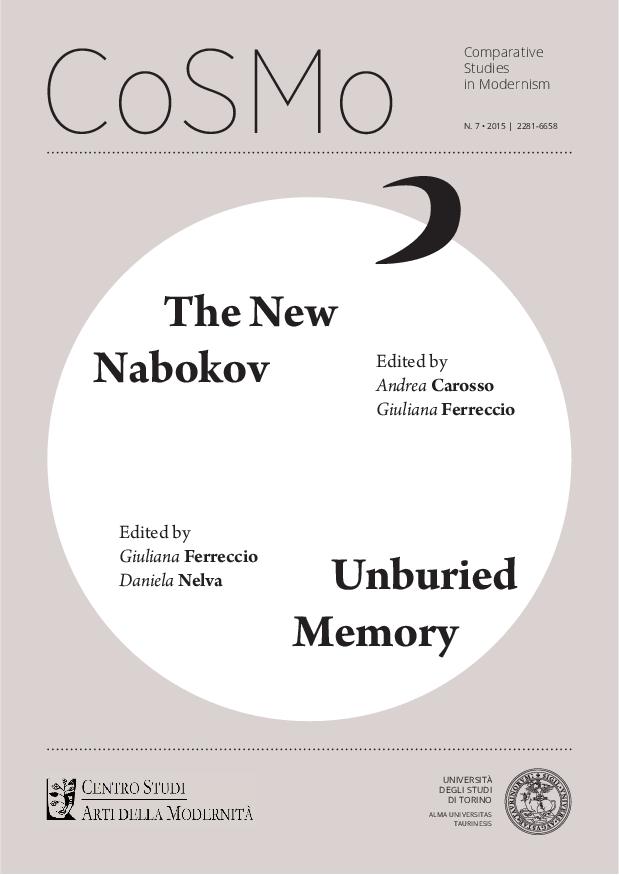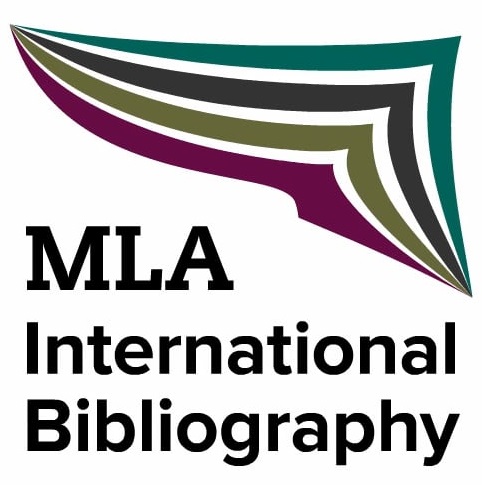Nabokov's Literary Legacy: Bridging Russian and American Postmodernism
Abstract
This paper aims to highlight the importance of V. Nabokov’s ouvre in shaping some aspects of selected Russian and American postmodern novels. In fact, given the complex stratification of different narrative layers that characterises his prose, the extreme attention to details, the constant presence of doubles, linguistic puns and a general playful attitude toward the text, it is quite clear why Nabokov has been recently seen as a precursor and pioneer of the postmodern genre. Lipovetsky (Russian Postmodernist Fiction, 1999) states that the ‘postmodernist potential’ of Russian modernism is easily demonstrated by the evolution of Nabokov: while works such as The Gift and Invitation to a Beheading embody the modernist canon, Lolita stands as the milestone of the American postmodern aesthetic. Moreover, Couturier considers Lolita, Pale Fire and Ada to be ‘archetypal postmodernist novels’ (‘Nabokov in Postmodernist Land’ in Critique 34, no. 4, 1993).
The presence of an unreliable narrator who despotically plays with the characters’ lives (Pnin, Look at the Harlequins!), testifies once more how blurred is the line between the role of ‘director’ and ‘character’: this key feature of the postmodernist narration (and metafiction) generates a tension that results in irony and self-referentiality. Barthes’s concept of ‘the death of the Author’ is clearly represented in Nabokov’s prose: the author’s presence merges with the text itself and pours into the characters’ actions, dialogues and behaviours. It is not by chance that Nabokov entrusts his last reincarnation, Vadim Vadimych N., with what may be considered his manifesto ‘the “I” of the book cannot die in the book’ (Look at the Harlequins!).
Thus, Nabokov’s modernist metafiction has evolved into something different, something new, and as Hassan (The Postmodern Turn, 1987) points out, modernism and postmodernism are not to be considered separated: postmodernism is in fact a continuation of modernism, a logical evolution of the previous literary movement and a physiological reaction to the contemporary society.
However, as this paper will show, Nabokov is not only to be considered as a bridge between modernism and postmodernism: he also represents the link between Russian and American postmodern literatures. By focusing on V. Pelevin’s The Sacred Book of the Werewolf (where the protagonist A Hu-Li is a revised - supernatural - version of Lolita) and T. Pynchon’s The Crying of Lot 49 (where the allusions to Nabokov’s style are frequent) we shall highlight the nabokovian elements present in these novels and demonstrate how Nabokov is in fact the keystone to the arch of Russian and American postmodernism.
In conclusion, the explicit tribute paid by Pynchon (a former pupil of his) and Pelevin (considered nowadays as ‘the Nabokov of the cyber-age’) to the author’s unique style, will allow us to unveil where the ‘new Nabokov’ lies and how he may indeed be seen as a literary Charon, who ferries the characters’ souls across space (Russian and American) and time (modern and postmodern).
Downloads
Gli autori mantengono i diritti sulla loro opera e cedono alla rivista il diritto di prima pubblicazione dell'opera, contemporaneamente licenziata sotto una Licenza Creative Commons - Attribuzione che permette ad altri di condividere l'opera indicando la paternità intellettuale e la prima pubblicazione su questa rivista.








